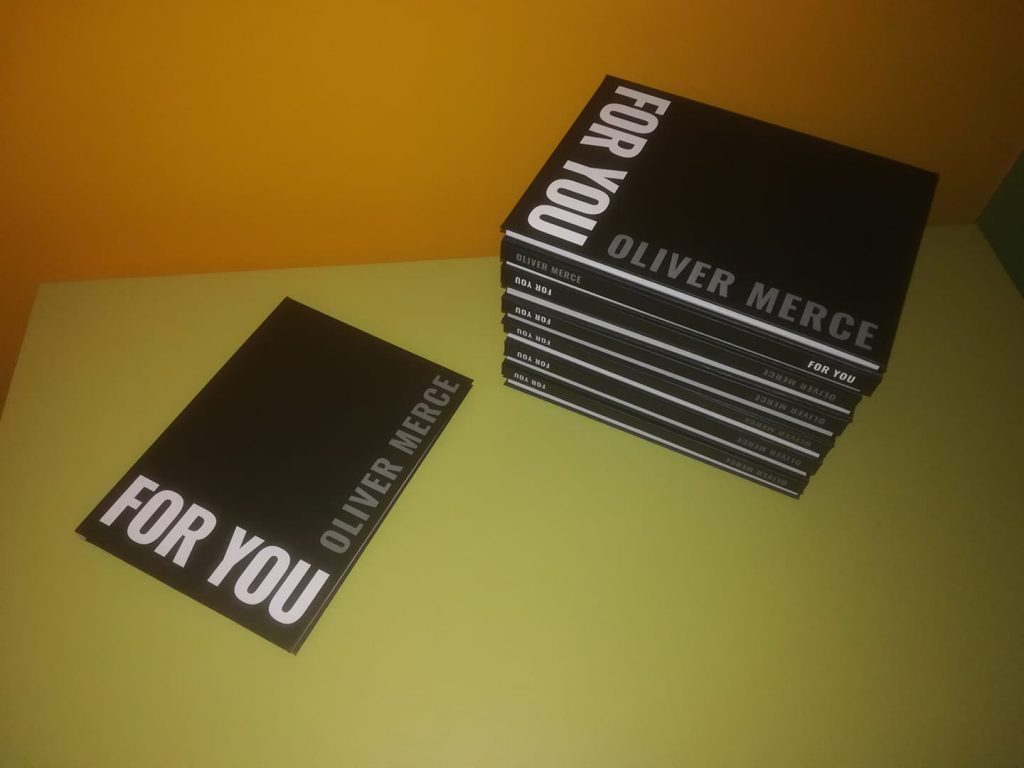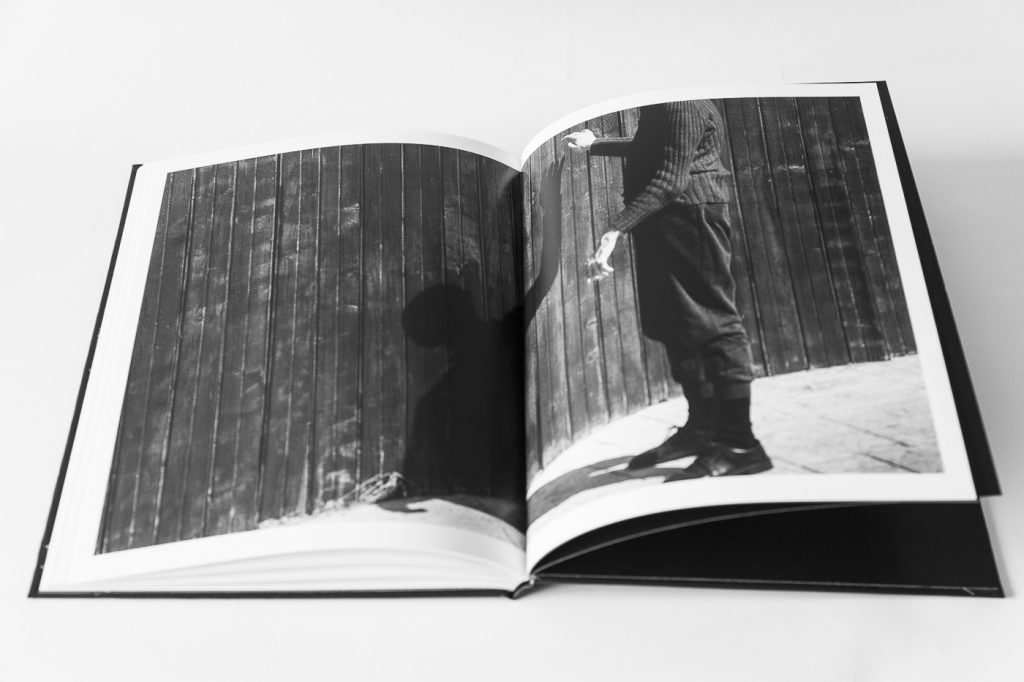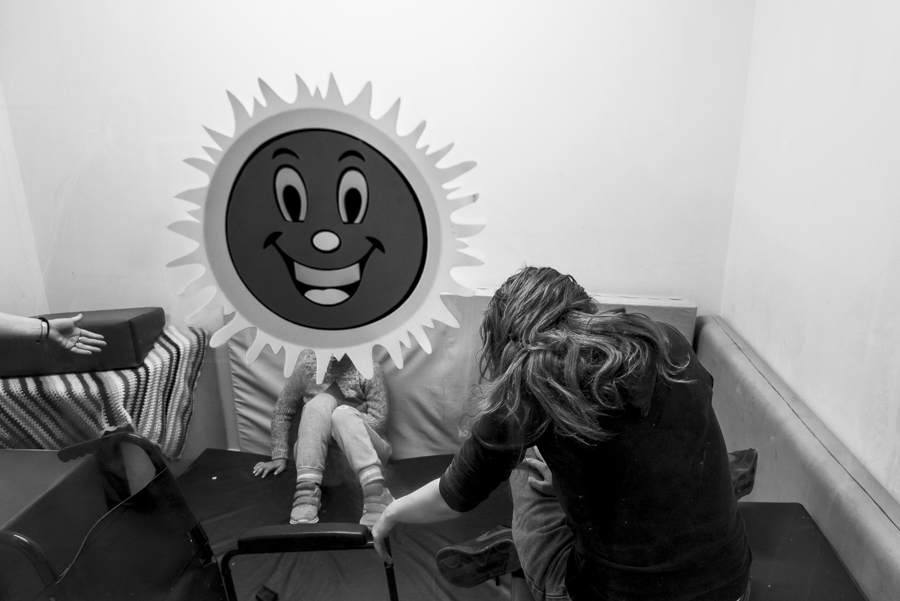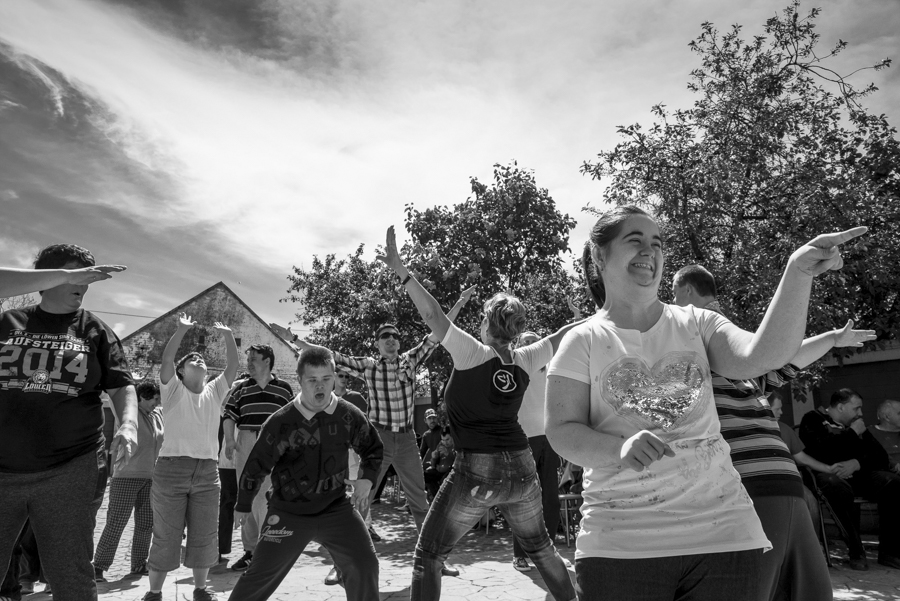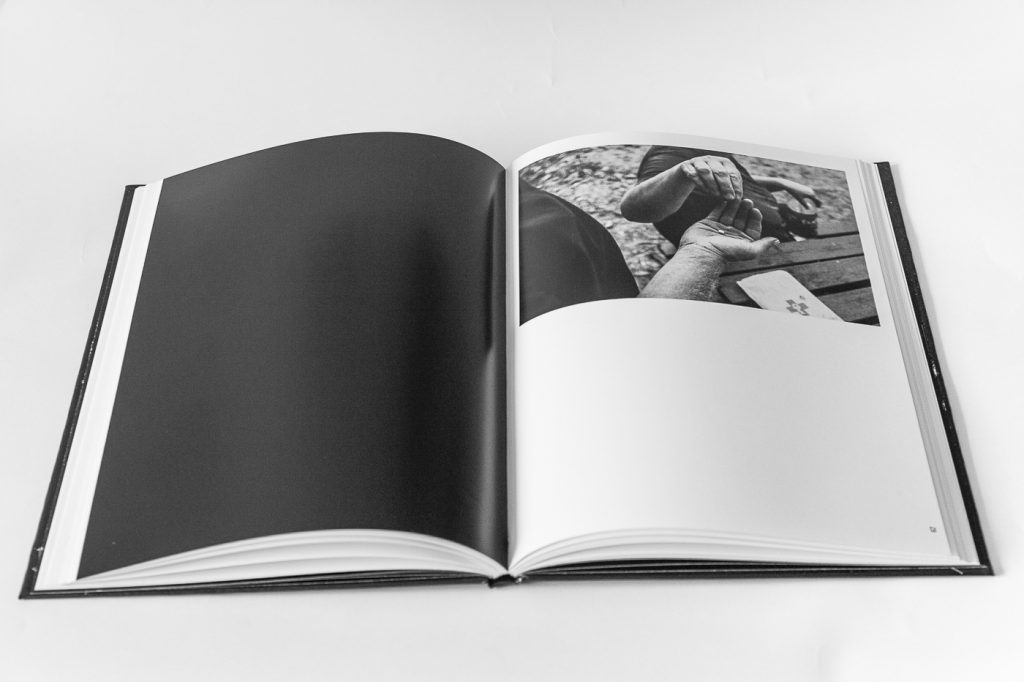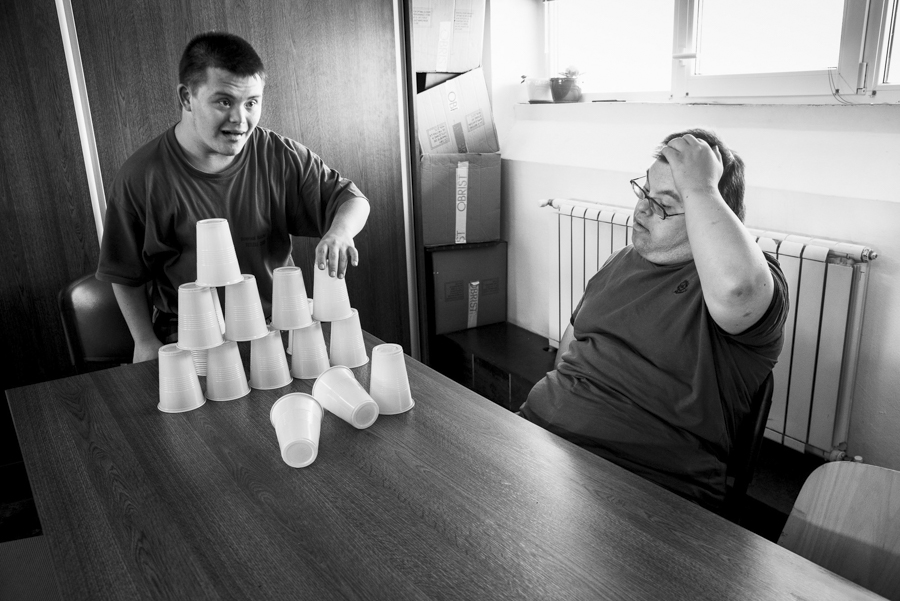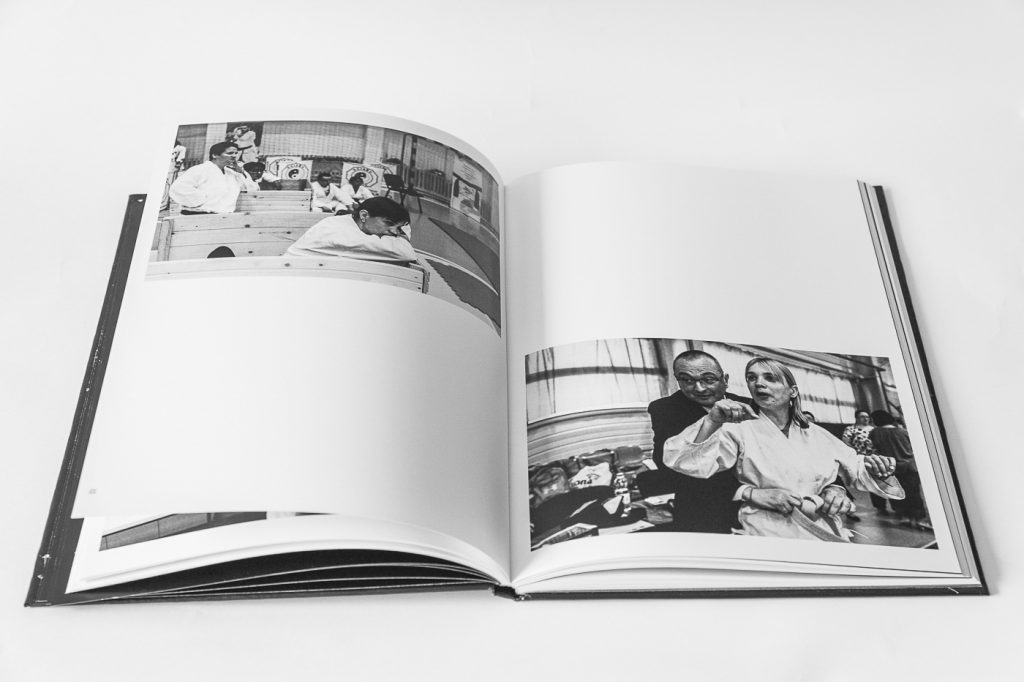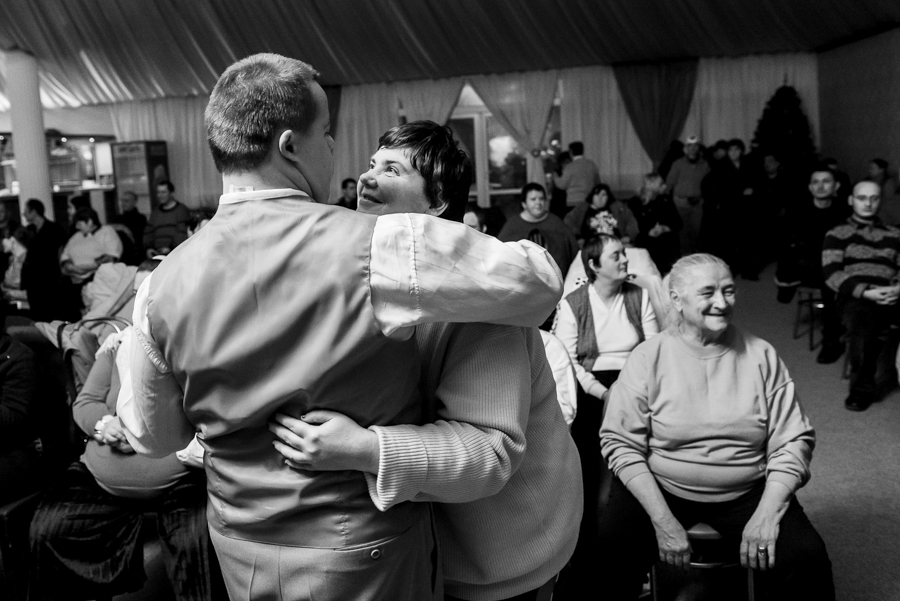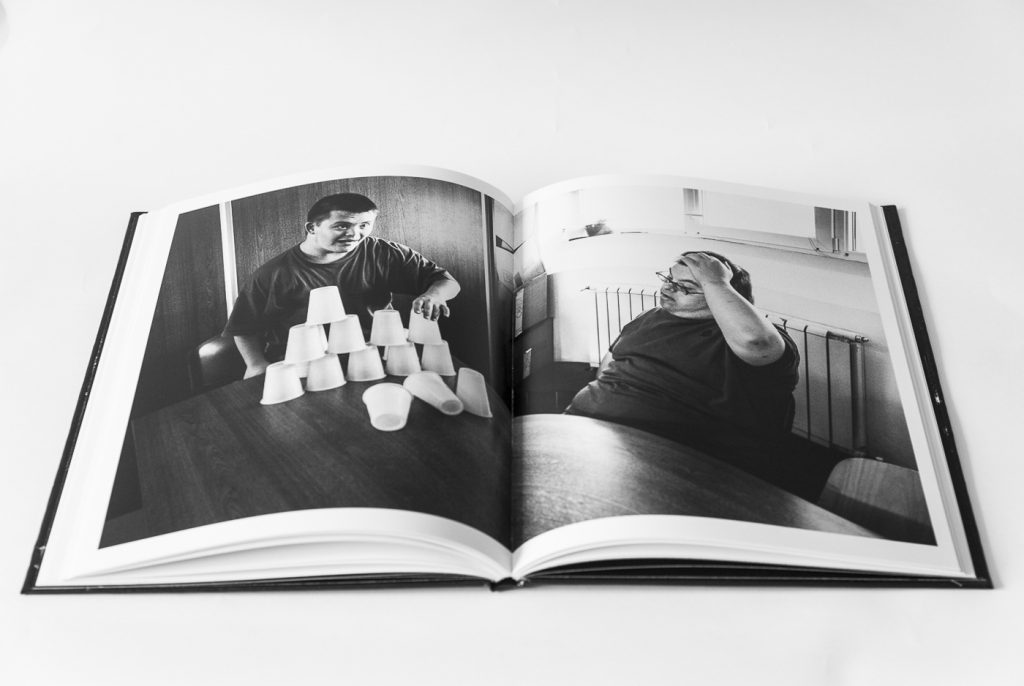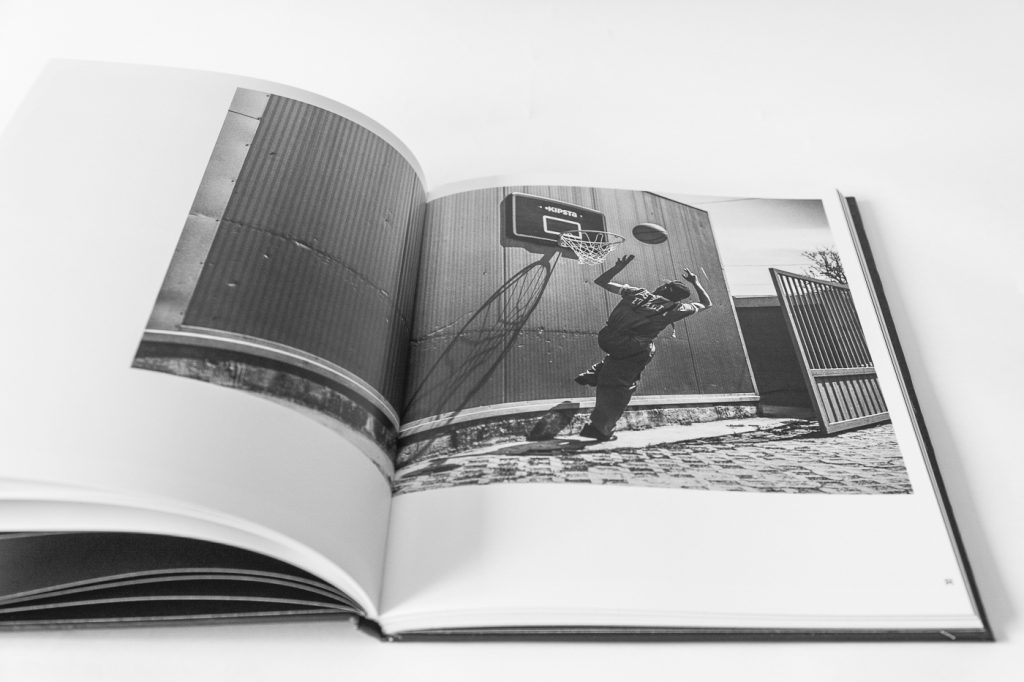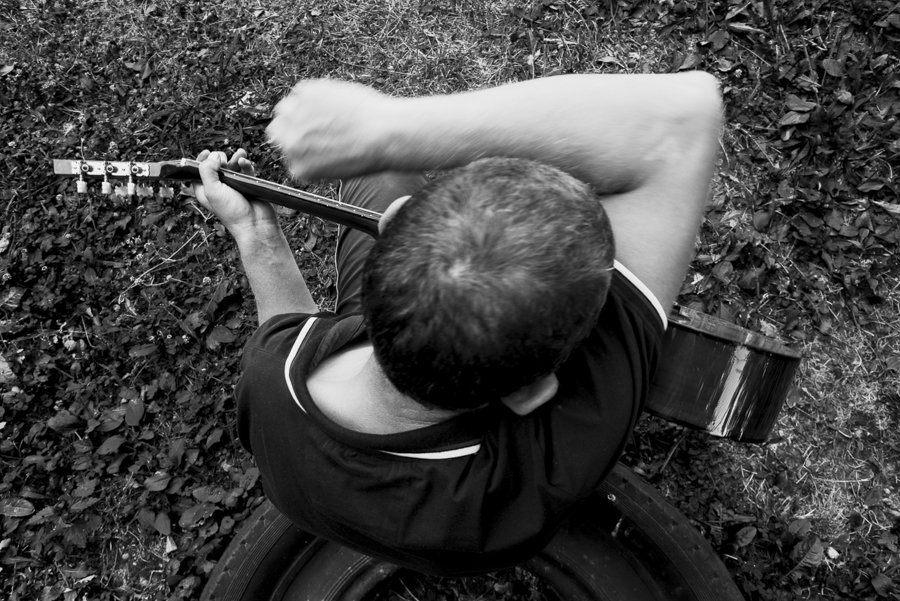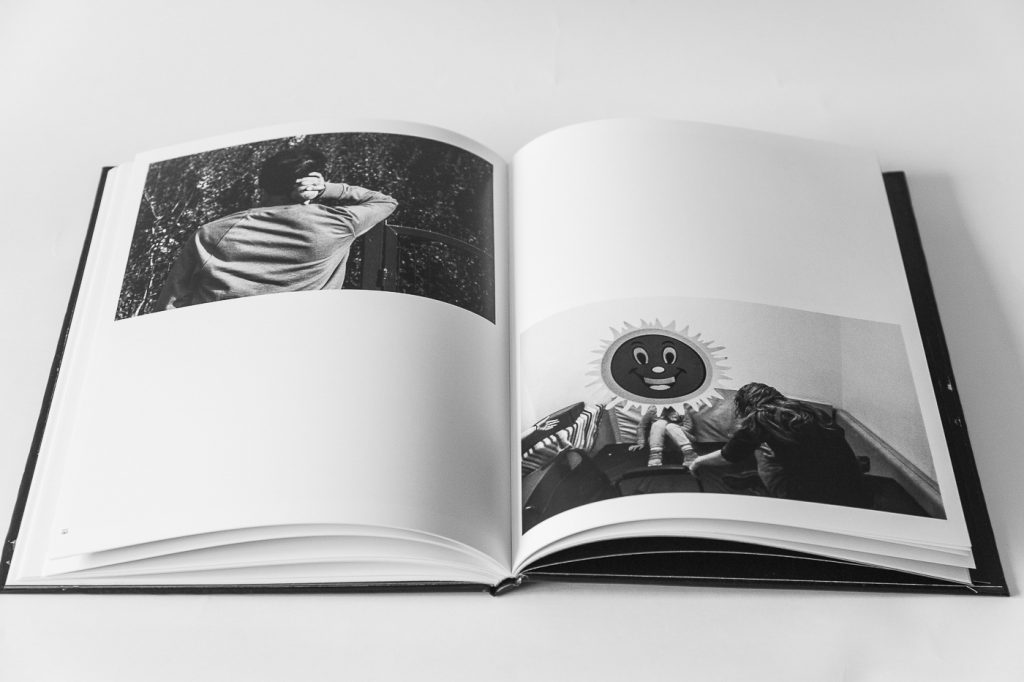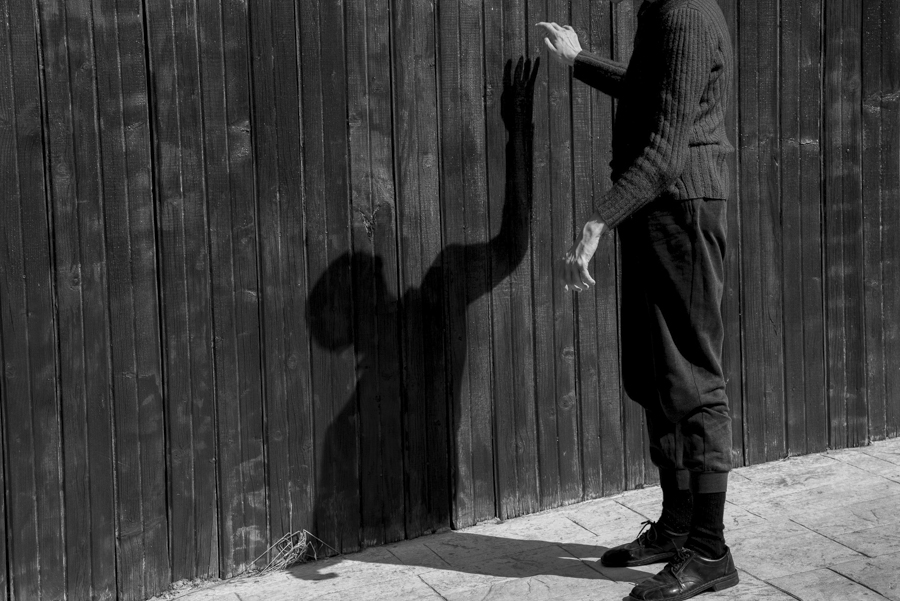A few years ago I worked with Oliver on his first photobook/big project called THE ANATOMY OF DECAY – a comprehensive story about an industrial zone and its people. The sold-out photobook was a success and feedback from the people who bought it showed a great interest and empathy towards humanist photography and well documented long-term projects.
On his second book Oliver pointed the camera, again, towards the people. But this time towards people with special needs: intellectually disabled people from the NGO “Pentru Voi” (“For You”). He started taking photos and he was moved by everything he saw: from the NGO staff to the beneficiaries of services and their struggles and problems. He wanted to do more for those whom he encountered and the idea of a charitable project came to his mind. Not actually a popular “like and share”/”thoughts and prayers” project but more of a “put your money where your mouth is” project.
I am familiar with these type of projects, this is not the first one I worked on. I know the reaction of people from the online environment to such initiatives and I know how to “manage expectations”. But, as for all Romanian photography in general, one can be surprised everyday, and everyday you find out new things you didn’t expect: after sharing your charitable project on your social media page people dis-liking your page; or not sharing the initiative because the subject is too “hard” and they prefer shiny hdr colored landscapes instead. But, as everywhere, there will be pitiful individuals in photography also.
The people from the NGO deserved a better audience, one who is interested in their story, one who will help in anyway they can. Maybe not all the time but maybe on special occasion like a photobook launch. This is not a mandatory thing, no one has to do it. But as far as a photographer goes, this might be a point of interest, as there are not so many Romanian photobooks launching nowadays, and, even more, if it is a charitable one. I cannot remember in the last few years if there was any project within these parameters with giving all the money from sales to charity. Also the people who contributed to this book, from research (Anca Ioana Radu) to proof reading (Mirela Petre, Alex Cruceru), print-proofs (Ciprian Furtuna), other important elements (Laila Onu, Diana Ungureanu, Simona Hanga, Corina Lucan) to translation and text (Florin Sipos, Nicolaie Ardelean) to editing and curating (myself) did their part without any monetary compensation.
When I first heard about the project I was afraid to tackle the subject, afraid the photos would fall into a category not very easy to approach. I have a great respect for my photographic subjects and an absolute horror to portrait them in an unsuitable way so I would refuse to shoot degrading portraits.
Oliver has some series of photos where the approach towards the subjects is visually stronger than usual. So I must admit I was a little afraid.
First time I saw the photos I was pleasantly surprised of how close I felt to the subjects. A deja-vu, if you will, from the Anina and Crivina stories. Very close, very intimate portraits and yet respectful, non intrusive.
With this in mind I started to think about the concept of the book. Oliver had already got a clear vision about how the physical book will look like in terms of book format and page structure. All that was left now was to find the structure and concept of the book. Being also a documentary project the “raison d’etre” of the photos remained the same but the concept of the whole thing was something yet to be finalized after all the photos were ready.
In religion, spirituality and all throughout humanity the hands have had so many meanings. In this book, people communicate with the viewer by hand gestures, showing emotions, showing desires and living the moments. It is a concert, where all of them are conductors of their own orchestra of emotions. They are not afraid to sing out loud, to sing happy songs, sad lullabies or to be a part of intense symphonies. Their music is transformed visually into gestures recorded by photos on a piece of paper.
I found a quote by Quintilian (Quintilian – Institutio Oratoria), illustrating the power of hands, in a book about the oratory art. What could be more suitable? In this moment I knew I have found a worthy concept for a very delicate subject.
“As for the hands, without which all action would be crippled and enfeebled, it is scarcely possible to describe the variety of their motions, since they are almost as expressive as words. For other portions of the body may help the speaker, whereas the hands may almost be said to speak.
Do we not use them to demand, promise, summon, dismiss, threaten, supplicate, express aversion or fear, question or deny? Do we not employ them to indicate joy, sorrow, hesitation, confession, penitence, measure, quantity, number and time?
Have they not power to excite and prohibit, to express approval, wonder or shame? Do they not take the place of adverbs and pronouns when we point at places and things? In fact, though the peoples and nations of the
earth speak a multitude of tongues, they share in common the universal language of the hands.”
When I was 10 years old and visiting my grandparents in the countryside I remember one of my friends there had a brother with intellectual disabilities. We, as kids, didn’t understand this situation or how we could handle things around him. Neither did the adults at that time. Or no one had the time to explain to us. Now, we all have a chance to be informed.
What we choose to do from that point on defines us.
OLIVER MERCE – FOR YOU
ISBN 978-973-0-28804-9
Print run: 200 photobooks
Book size: 24x18cm
Language: Romanian and English
Plastified matte Hardcover
104 matte paper 170g
68 black and white photos
Photography and text: Oliver Merce
Essay: Florin Șipoș
Text: Laila Onu
Translation: Nicolaie Ardelean
Editor: Cristian Bassa
Link to order the photobook: http://www.olivermerce.ro/book-order/books/
All profits from the sales go to NGO “Pentru Voi” http://pentruvoi.ro.
